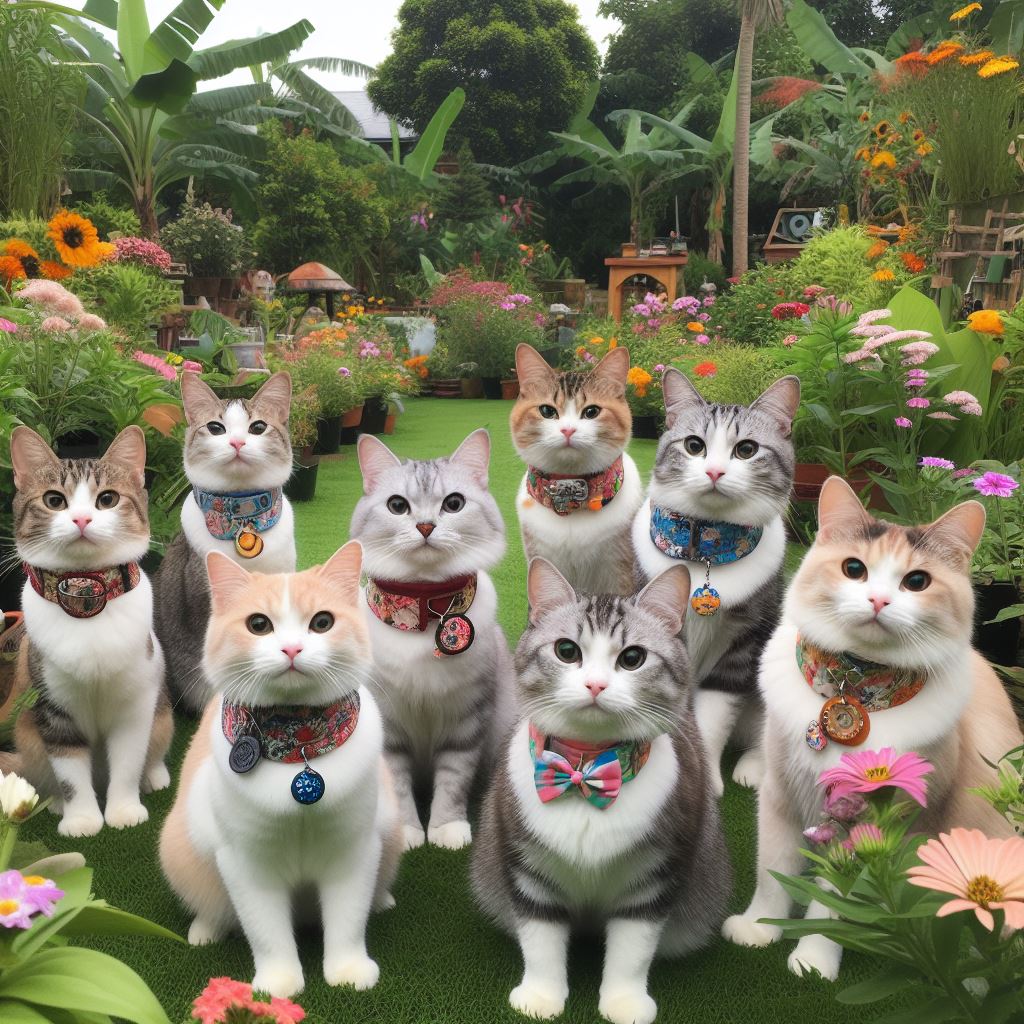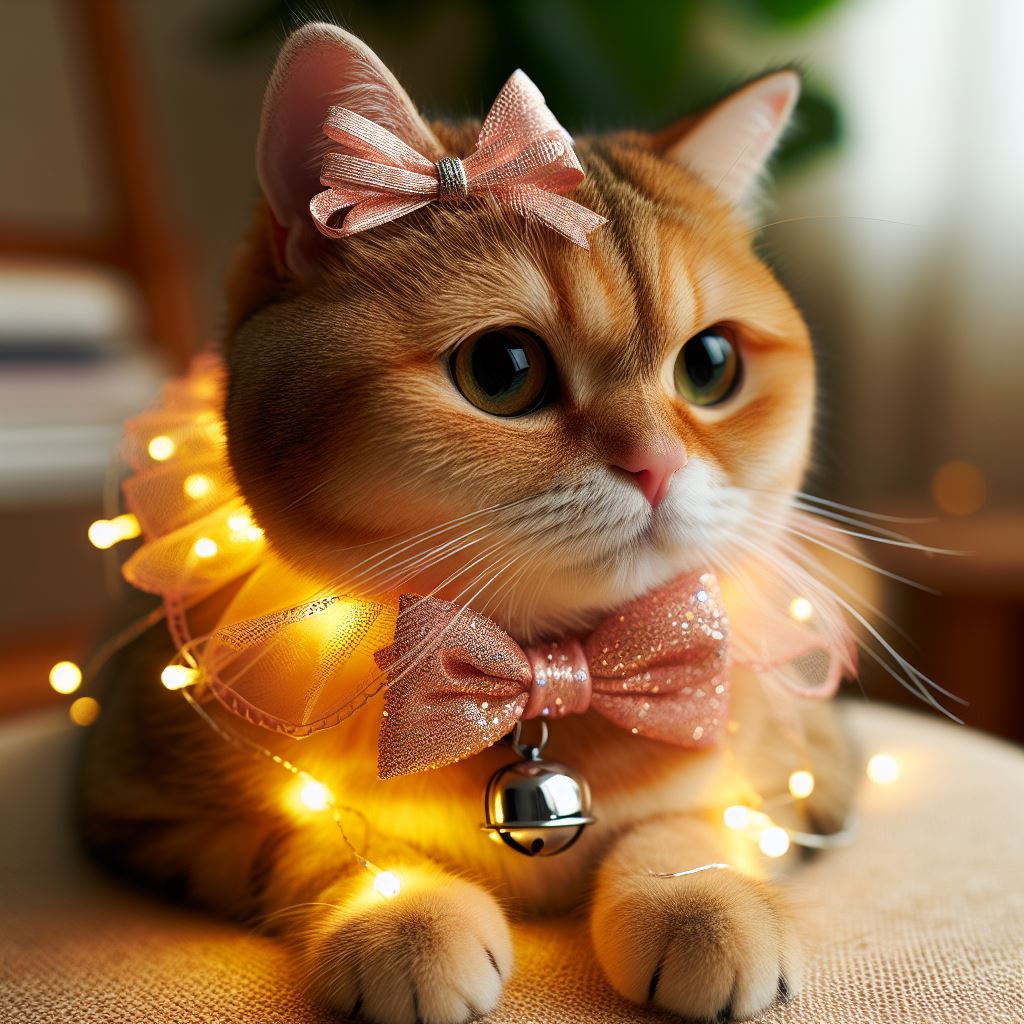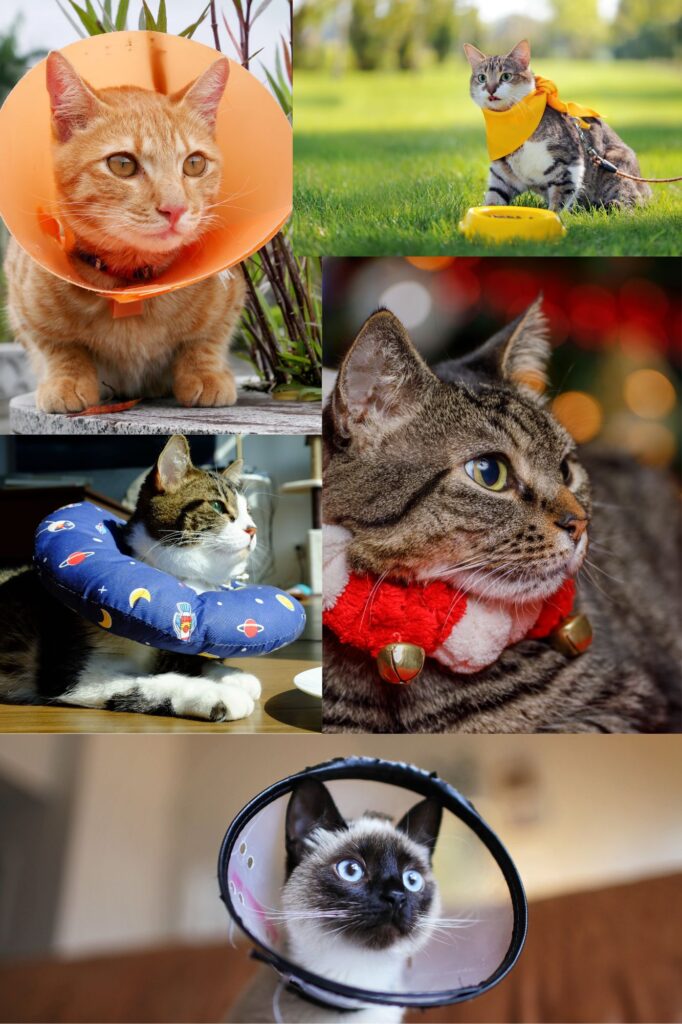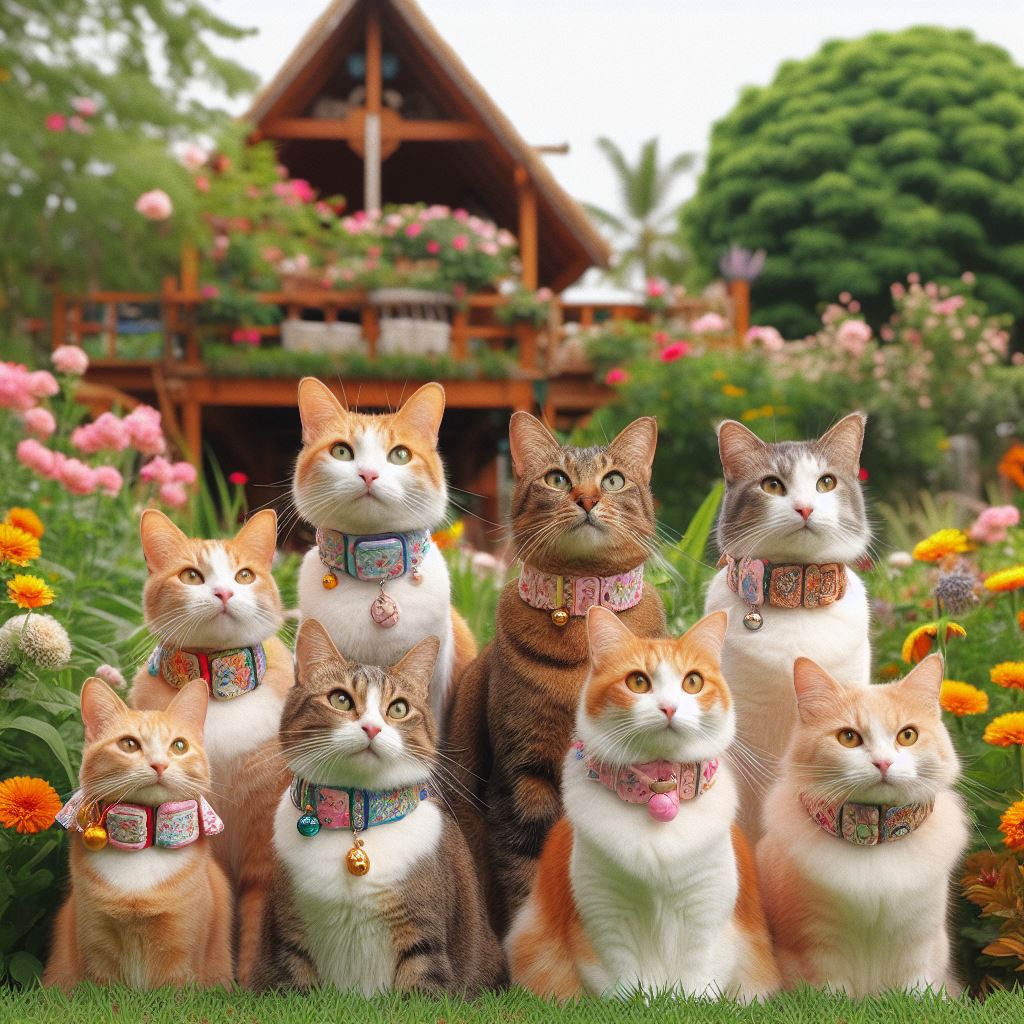Cat collars is just like an ornament that your beloved pet is wearing. Overall look of your cat changes, as soon as cat wears a collar around a neck. And notice your cat’s attitude, there is a sudden change in a behavior, cat feels I am looking like a wow.
Cat somewhere knows he or she looking pretty, handsome. So guys Cat collars have become an essential accessory for feline companions, serving various purposes beyond mere embellishment. We will guide you completely why to go for cat collars.
Together we will explore the importance of cat collars, their advantages and disadvantages, the best materials and styles, and why incorporating them into your pet care routine is crucial. Dive into this detailed article for insights that will help you make informed decisions about the well-being of your beloved feline friend.
Types of Cat Collars
We have literally large variety in cat collars nowadays. From breakaway collars to personalized options, means cat owners have a plethora of choices. Choosing the right collar involves considering the cat’s safety, comfort, and style.
Cat collars come in various types, each designed to fulfill specific needs. From leather, nylon to breakaway collars that prioritize safety to personalized options that add a touch of uniqueness, understanding the essentials is really important. For example rounded collar can help prevent their fur from tangling.

Breakaway Collars
Breakaway collars are designed to release when pressure is applied, reducing the risk of choking or injury. They are ideal for outdoor cats and those prone to exploring tight spaces.
Personalized Collars
Personalized collars allow you to add your cat’s name and your contact information. They serve both functional and aesthetic purposes, combining safety with a touch of uniqueness.
Reflective Collars
Reflective collars enhance visibility, making your cat more noticeable in low-light conditions. They are suitable for outdoor cats, providing an added layer of safety during nighttime adventures.
Flea Collar Caution
Don’t breathe a sigh of relief just yet! Flea collars, despite their pest-fighting prowess, share similar dangers with regular collars. To play it safe, skip the flea collar aisle altogether and opt for spot-on preparations. I personally do not recommend flea collars at all.
Remember, safety and style can go paw in paw, but it’s crucial to be mindful of the potential risks that come with collaring your cat. After all, our feline friends deserve the purr-fect blend of safety and flair! 🐾💖
Safety Measures
Our beloved cat, growing with us as a kitten, either we adopted recently or purchased our beautiful cat. To have a feeling that cat is ours or give your cat a great feel by wearing cat a collar.
While cat collars are essential accessories, safety should always be a top priority. Ensuring your cat’s safety and fashion-forwardness with a collar is crucial, but not all collars are created equal. Implementing tips for safe collar usage and avoiding potential hazards ensures a secure and enjoyable experience for your feline friend.
Danger lurks when a collar lacks a safety clasp, elasticity, or fits improperly.
In fact, cat collars enhance the overall safety of your pet by providing a means of identification, it’s essential to implement safety measures. We will see some tips for safe collar usage and avoiding potential hazards ensure a secure and enjoyable experience for your feline friend.
Regular checks really matters
Give the collar a regular once-over. Take a moment every few days to check on your cat’s collar. Ensure it’s not too tight or too loose, and inspect for any damage or loose threads that might pose a risk. Also, make it a habit to examine the skin beneath the collar during your routine health checks for your furry friend.
Comfy Cat Collars with light attachments
Keep it light with collar add-ons. If your cat’s collar sports any extras, like an ID tag, tracker, or bell, keep them small and lightweight. It’s crucial to verify that these additions don’t interfere with the collar’s quick release or hinder your cat’s natural movements. Opting for minimal and lightweight attachments ensures both style and comfort for your feline companion.

Sizing and Fitting
One size does not fit all when it comes to cat collars. Proper sizing is crucial for comfort and safety. We should learn how to measure our cat for a collar to ensure a snug yet comfortable fit. As cat grows in size with time, so check n balance is very important.
Advantages of Cat Collars 💙 🐾
Identification and Safety
The primary advantage of cat collars is the ability to attach identification tags. In case your cat goes missing, a collar with your contact information significantly increases the chances of a safe return. Breakaway collars add an extra layer of safety by releasing when pressure is applied, preventing accidents and injuries.
Style and Personalization
Cat collars have evolved beyond functional accessories to stylish statements. With a myriad of designs, colors, and patterns available, you can choose a collar that not only enhances your cat’s appearance but also showcases their unique personality.
Allow me to share a personal experience with you. One of my Siamese cat, I will attach its picture also, was somehow less confident than other cats. I always tried to boost it up. But she is shy and very reserve.
I got a collar for her, the time she wore, she got an attitude, her face blossomed like a flower, I noticed shine in her eyes. I was astonished, very much surprised by sudden confidence in her, I praised her oh my little sweetheart is looking so elegant, Cinnamon looks too pretty, and she was overwhelmed.
Visibility with Reflective Collars
For outdoor cats, visibility is a crucial consideration, especially during nighttime adventures. Reflective collars enhance visibility, making it easier for drivers and pedestrians to spot your cat in low-light conditions. In case you take your cat out at evenings for walk.
Training Aid with Bell Collars
Bell collars serve a dual purpose. Besides providing an audible cue to your cat’s whereabouts, they can also act as a training aid. The sound of the bell alerts birds and small animals, reducing the likelihood of your cat catching them. Above all, you know where your cat is moving all day, as the bell announces the movement.
Disadvantages of Cat Collars
Safety Concerns with Non-Breakaway Collars
While breakaway collars are designed for safety, non-breakaway collars can pose a risk. Cats may get entangled in objects, leading to accidents. It’s crucial to carefully assess the environment and choose an appropriate collar type.
Allergic Reactions to Materials
Some cats may develop allergic reactions to certain collar materials, it is very rare. Common materials include leather, nylon, and fabric. Pay attention to your cat’s behavior and skin condition when introducing a new collar.
Resistance to Collar Use
Not all cats readily accept wearing collars. Some may resist and attempt to remove them. Gradual introduction and positive reinforcement can help acclimate your cat to wearing a collar.
Best Materials for Cat Collars
Leather Collars
When it comes to collars, leather ones stand out for their enduring strength and timeless charm. They are sturdy, resistant to wear, and often come in classic designs. However, best for winter weather, they may not be suitable for cats that are frequently exposed to water.

Nylon Collars
Nylon collars are lightweight, affordable, and come in a variety of colors and patterns. They are suitable for all weather conditions and are easy to clean. However, some cats may be sensitive to nylon, causing irritation. Keep check and balance.
Fabric Collars
Fabric collars provide flexibility and comfort. They are often customizable, allowing you to choose unique patterns and designs. However, they may not be as durable as leather or nylon options.
Why Cat Collars are Essential
Preventing Accidental Escapes
Cats are known for their curiosity, and indoor cats may occasionally attempt to explore the great outdoors. Cat collars with identification tags can be crucial in ensuring a swift return in case of accidental escapes.
Is it advisable for kittens to wear collars?
It’s a rare sight to see a kitten wearing a collar, isn’t it? So, should your little fur ball rock a collar? Absolutely! Your kitten acquainted with a collar at an early age is a fantastic idea. The sooner they get familiar with wearing a collar, the more comfortable and at ease they’ll be with it as they grow older. It’s all about setting the stage for a lifetime of kitty comfort and style! 🐾✨
It’s recommended to opt for collars with a safety breakaway feature, a slightly loose fit, and some elasticity to avoid any unintended snarls.
Luckily, you’ll discover a range of collars tailor-made for young kittens and smaller cats. Coastal has got you covered with perfectly sized options, including most popular breakaway collars, elastic ones, and even those adorned with bows and charming embellishments. It’s all about enhancing their presence and style, making sure your pint-sized companion struts around in safety and flair!

Enhancing Safety in Outdoor Cats
Cat collars are not just about safety; they’re also a fashion statement. We should keep in mind collars should be stylish and must have functional designs. Explore trendy designs and functional features such as bells and ID tags that enhance both style and utility.
For cats that venture outdoors, collars are a valuable safety measure. Identification tags and reflective collars make them more visible, reducing the risk of accidents and aiding in their safe return home.
Key Features of Cat Collars
Different cat collars serve various purposes. Breakaway collars prioritize safety, while personalized ones add a touch of uniqueness. Reflective collars, on the other hand, enhance visibility during nighttime adventures.
Paw-ssible Tangles: Your feline may turn into a little acrobat trying to ditch the collar or scratch an ear, risking their paws or claws getting caught in the process.
Tight Squeeze: Collars on the snug side can chafe, causing discomfort and even risking injury to the delicate neck area.
Jaw Jams: A too-snug collar might trap your cat’s lower jaw, making it uncomfortable for them to close their mouth.
Strangle Struggles: There’s a real risk of choking or strangulation if the collar unexpectedly hooks onto a nearby object.
What to Seek in a Collar: Considering these potential pitfalls, keep these crucial points in mind:
Opt for a collar with a safety clasp that releases under tension, ensuring your cat won’t get stuck in sticky situations.
Fit is everything. When your cat is rocking their collar, you should be able to slide one or two fingers underneath comfortably.
Regular collar check-ins are a must, especially if your cat is in the growth spurt express lane.

Fostering Responsible Pet Ownership
Using cat collars with identification tags reflects responsible pet ownership. It allows others to quickly identify your cat and contact you if needed, contributing to the overall welfare of your feline companion.
Is it a good idea for my micro chipped cat to sport a collar?
Certainly! Collars act as a visual signal to let folks know your cat has a loving home. They’re not just a cute accessory; they are part of a family and we mean it. Collars are handy for holding identification, especially if your adventurous kitty decides to explore beyond the neighborhood. While micro chipping provides a crucial safety layer, it’s essential to note that a microchip can typically only be checked when your cat ends up at the vet or a shelter. So, adding that extra flair with a collar is a smart move for keeping your feline friend safe and stylish!
feline friend safe and stylish!
Conclusion
In conclusion, cat collars are indispensable accessories for pet owners, offering a myriad of benefits ranging from safety to style. The choice of materials and styles depends on individual preferences and the unique needs of your cat.
However, let’s be real—collars, even the seemingly “safe” ones, can’t promise an iron-clad guarantee against potential kitty / cat mishaps.
Relying solely on a collar and tag might seem like a solid plan, given their visibility in identifying a cat with an owner when spotted outdoors. However, it’s crucial to remember that breakaway collars, designed to release when tugged, mean that if the collar comes off, so does the tag. For a foolproof backup, cats should always have permanent identification.
“We always recommend that cats have permanent ID, such as a microchip or ear tattoo, in addition to a collar with an ID tag containing contact information. This comprehensive approach ensures they have multiple layers of identification to guide them home if they happen to go astray”. 🐾💫
Frequently Asked Questions About Cat Collars:
Q1: Should I put a collar on my indoor cat?
A1: While it’s not mandatory for indoor cats, collars with identification tags are a good idea. In case they slip out, it helps identify them quickly.
Q2: Are breakaway collars safe for cats?
A2: Yes, breakaway collars are designed to release when pressure is applied, reducing the risk of choking or injury. They are especially recommended for outdoor cats.
Q3: What size collar should I get for my kitten?
A3: Choose a collar that is snug but not too tight. Aim for one or two fingers’ space for comfort. Consider adjustable collars to accommodate their growth.
Q4: How do I introduce my cat to wearing a collar?
A4: Gradually introduce the collar indoors for short periods. Use positive reinforcement like treats and praise. Monitor their behavior and comfort level.
Q5: Can I attach a bell to my cat’s collar?
A5: Yes, a bell can be attached to alert you to your cat’s whereabouts. Ensure it’s small and secure, not hindering your cat’s movements.
Q6: Should I use a flea collar for my cat?
A6: Flea collars can be effective but may pose risks. Consult your vet for safe alternatives like spot-on treatments, especially for indoor cats.
Q7: How often should I check my cat’s collar?
A7: Regularly check the collar for fit, damage, or tightness. Perform thorough inspections every few days, especially if your cat is still growing.
Q8: Are there specific collars for long-haired cats?
A8: Yes, rounded collars can prevent tangling in long fur. Look for designs that won’t catch or mat the fur while keeping your cat stylish.
Q9: Can I use a collar with a harness for leash training?
A9: Yes, a harness is preferable for leash training. Collars may strain the neck, while harnesses distribute pressure more evenly for a safer experience.
Q10: Are there collars with GPS for tracking my cat?
A10: Yes, there are collars with GPS trackers. These can be useful for locating your cat if they venture outdoors. Ensure the collar is comfortable and secure.
Remember, every cat is unique, so tailor your choice of collar to their personality, comfort, and safety needs.

